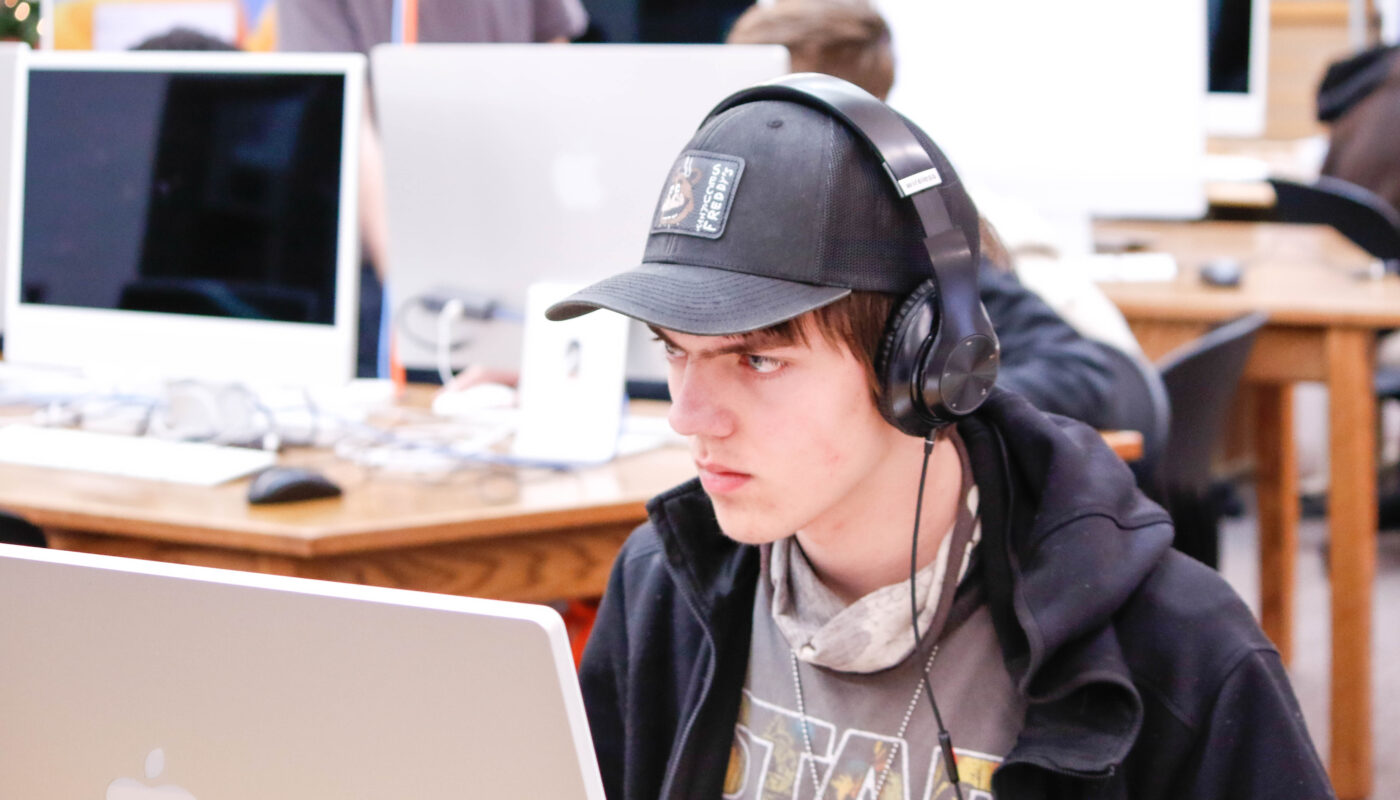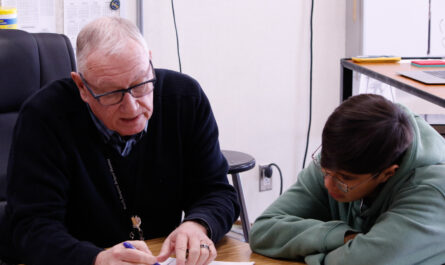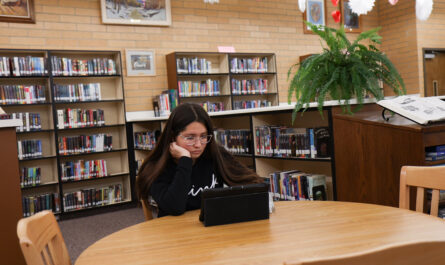Reserved. Focused. When asked a question he’ll give you a direct answer, but not much else. Sophomore Liam Andersen doesn’t feel the need to tell people what they want to hear. He tells them straight and goes back to his current project. This could be any- thing, from writing a Sci-Fi novel to writing to his Japanese pen pal. Right now, his biggest project is creating a video game, “The Museum Shift.”
“He keeps me on my toes,” Speech and Debate and Language Arts teacher Alex Bailey said. “I’m kinda waiting for the next thing he’s going to surprise me with… Every once in a while, I’ll get an email from him like, ‘Hey, here’s this new thing I did. Check it out; let me know what you think.’ I didn’t even know he was making a video game and then all the sudden I got an email.”
The game is based on the concept of the game Five Nights at Freddy’s. The goal of the game is the same, to survive five nights of attacks by animatronics. It even includes some of the original characters. However, the lore after 1993 has been rewritten, it’s in a different location, and the art, a majority of the characters and music, are his creations.
“When you start it’s on a static screen then press play then you enter this office,” friend and fellow sophomore Braxton Evans said, “with doors you can shut and a camera system. The place seems filled with bricks, he has his own art in certain areas, he has an arcade, and a couple of animatronics.”
While making a game is something Andersen has wanted to do since he was a very young age, he didn’t start working on this game until a few months ago.
“I just drew a picture once and decided that’s what I was going to do later on,” Andersen said. “I started doing art for it in August, but it was sort of just screwing around, and then I officially started [making it] I think in September…I just felt like doing something with all my art and music.”
Andersen hadn’t taken classes on how to create games or learned from anyone in particular, he figured it out by himself.
“I’m completely self-taught,” Andersen said. “I just sort of screwed around until something came out. What I use most is Scratch because everybody says you can’t make a good game with it, so I ended up making a good game with it.”
He started his game on paper and his iPad, then used a program called Turbo Warp to turn his files into executable files he could upload to Scratch.
“I wrote it all down with regular code on a piece of paper,” Andersen said. “The actual website on Scratch is all blocks, which is kind of annoying because you can lose them really easily.”
Creating the game has been a long process, starting out with the larger aspects of the game and then working on it until all that is left are small game bugs. Then fixing those.
“I took a bunch of official renders and just put them in and then made sure it all functioned then I redid all of the art, rewrote all of the AI like three times, and then made sure that all the endings were basic functions and then bug fixing and then here we are.”
While there were plenty of complications with game bugs, Andersen didn’t find any specific part of the process frustrating.
“I don’t think there was any particular hard part because this was something I wanted to do, something I needed to do so I just spent time on it,” Andersen said.
Currently, only the demo and teasers are out, the game is to be officially launched on Dec. 25 this year on Game Jolt, a platform for video gamers and content creators.
While his video game is his biggest project right now, Anderson also writes novels. The subject of these can vary from; a man exploring a wasteland and finding a dog to books potentially related to his game, such as ‘The return of fredbears.’ He even has a book he wrote in Japanese and translated himself.
He started learning Japanese when he was seven, because his dad had gone to Japan a few times and would share the phrases he learned there.
“I didn’t really want to learn it,” Andersen said, “but my dad would wake me up every morning in Japanese so I eventually picked it up. And then last year, I don’t really know why but I ended up wanting to learn it so I did.”
He started out learning basic terms and phrases, and then when he got interested in it he started focusing on the main structures and elements of the language; kanji, hiragana katakana. He read his dad’s old books in Japanese and started practicing writing the character and honorifics in a notebook.
“I have this phrase book which my dad got before I was born,” Andersen said. “So I just read five pages and then hopefully some of it sticks, and if it doesn’t I go back and do it again until eventually I pick it up.” One thing that is in common in all of his projects is how creative they can be, representing Andersen as a person.
“He always brings, to me, a unique perspective to things.” Bailey said. “Sometimes I feel like in school there’s kind of a surface level of thinking of something and a lot of kids are like that, and it’s fine, it’s not bad, it’s kind of just where they’re at. There’s kids who will kind of tell you what you want to hear, some kids think deeper about stuff, and some kids are just way out of the box and that’s Liam. Like he just brings a new perspective that I don’t really get from other students.”




